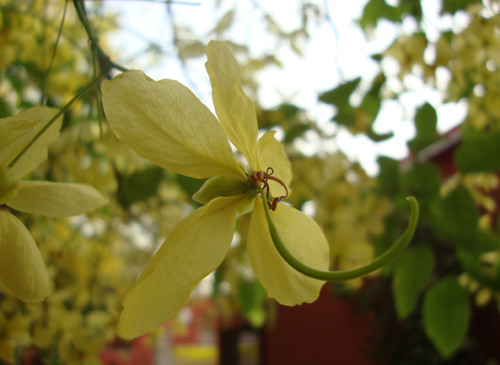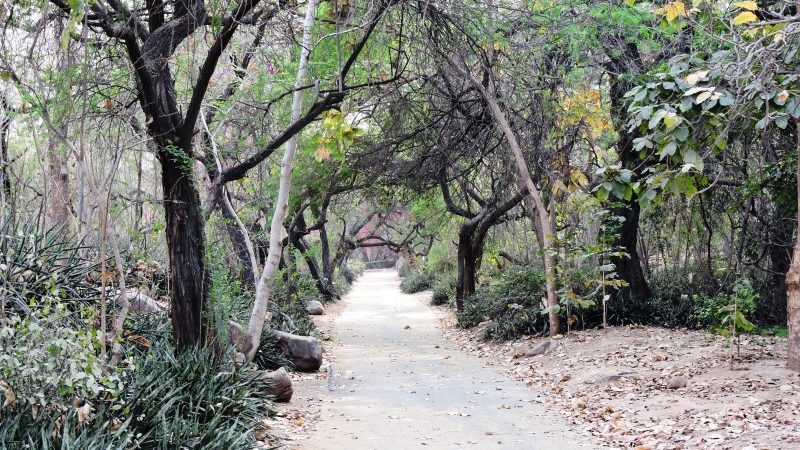Cultural Ecology of Trees in Delhi

These days Amaltas or Laburnums are in full bloom. The lovely small yellow flowers hanging like a chandelier from the bare branches is a lovely site. Especially in the Chanakyapuri area where these are planted aesthetically along the main roads of the Panchasheel Marg. Delhi as a city is blessed with a collection of flowering trees. Each species blossoms at a different time in the year with different colours and size, big and small. They seem to cover the entire spectrum of the rainbow colours, Yes! even green. The Shirish or Rain-tree has two types of blossoms, pink and green. The blossoms provide shade and beauty in almost all the seasons.
There was always a reason to plant trees and the planting was determined by the cultural ecology of trees by respective civilizations. For a tree to be useful to human beings, it will have to have flowers that are sweet smelling, or shade that protects the roads and houses or fruits and nuts that can be eaten or used, or provide fuel wood or timber that can be used for compound and roofs. But with the colonization by the British Raj, among other things, the cultural ecology of the trees in the capital city also changed.
When I mentioned this to a historian, she shared with me that all the trees in Delhi are barely a 100 or 150 years old. It coincides with the decision of the British to move their capital to Delhi in 1911. Delhi was back then covered with forest of Khejadi or Bahul trees, native to the region. So they planted trees brought from England which all died within a year. Over time and sustained efforts some survived, to decorate the streets of Delhi as we see it today.
The traditionally trees are planted to serve the settlement. So they bear edible fruits or nuts or have sweet smelling flowers. In and around temples, besides flowering trees there would be Neem, Peepal, Audumber (wild fig) and Banyan, trees with shade and water retaining qualities. Whereever there are significant connecting roads there were Neem, Peepal and Banyan trees planted in the past, usually as ordered by the then rulers or administrators.
The most interesting study of cultural ecology of trees is by an anthropologist couple, in sub Saharan Africa. An earlier theory states that deserts are a result of the greed of human settlements, people who pulled down trees and hunted wild animals leading to desertification. These anthropologists pointed out that the greenery, tree cover and all moved with the settlements. It is true for India, including the JJ slums and villages in Delhi. Each, has a religious space, a small temple or a mosque where trees are supported or sometimes even a stand alone tree that is considered to give peace of mind by sitting under it.
Inspiring enough for you to exchange information on trees in your vicinity? Look forward to the exchange….




i hate this site
loved to read d history of trees in delhi. I have recently acquire d the hobby of gardening and need morenu dhingra
inputs of dfferent varieties with photos.
is is possible pl to enlighten on the same
reg
mee